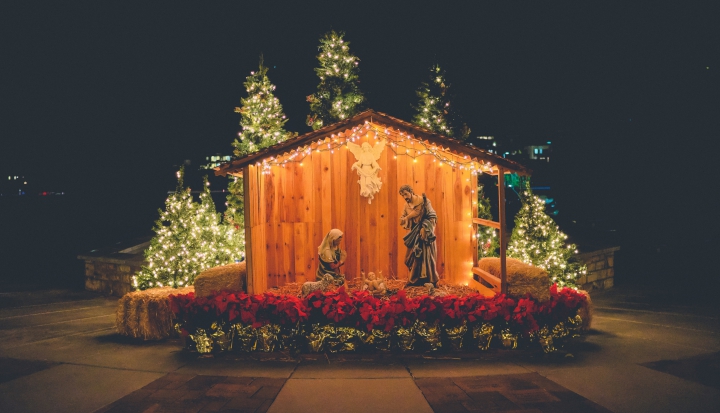As a kid the few days before Christmas were a rush of activity. My parents always waited until then to get our tree. My brothers and sisters would say that my parents waited because of the bargains, but I believe they were celebrating Advent.
My parents were waiting. Waiting is what you do in Advent. This is not the hurry-up-and-wait we do when we are frustrated with a slow computer or in a never-ending grocery line. This is a sit down and watch the snowfall kind of waiting, vigilant and full of expectancy. This is Advent: a time of waiting for Christ. But where does this liturgical season come from? Is Advent in the Bible?
The origins of Advent
The origins of Advent as we celebrate it today are obscure but were established well after Christ’s birth. Sermons from as early as the fourth century use the Latin word adventus, meaning arrival.
Initially only clergy celebrated, fasting for the four weeks before Christmas. Eventually all the faithful were invited to practice the ritual of waiting in the month before Christmas. Gregory the Great was the first to include prayers, antiphons, and biblical readings for Advent in the liturgical calendar around the late sixth century.
By the Middle Ages the church had adopted the Advent wreath to mark the time the faithful would spend waiting for Christ to come anew.
Advent in the Bible
All of these traditions grew out of later church practices: There is no explicit mention in the Bible of any Advent season before Jesus’ birth. However, scripture is full of stories of others who wait with the same expectant hush we now experience in the four weeks before Christmas.
Moses and Miriam with the Israelites wait for guidance as they experience the Exodus. The psalms reflect this waiting (“I wait for the Lord, my soul waits, and in his word I hope” [Ps. 130:5]), and the prophets exemplify how we wait for God’s justice and peace (“When the poor and needy seek water, and there is none . . . I the Lord will answer them, I the God of Israel will not forsake them” [Isa. 41:17]).
Mary and Joseph wait too, and their experience shows us how God communicates with and cares for us.
Finally, St. Paul reminds us that early Christian communities learned to be Christ-like, even in the midst of persecution, while they waited for Christ’s return: “The Lord is near. Have no anxiety at all, but in everything, by prayer and petition, with thanksgiving, make your requests known to God” (Phil. 4:6–7).
Today we follow in these biblical figures’ footsteps as we wait during Advent by trying to figure out within our daily lives how to be the incarnating presence of God today. How to love, how to offer mercy, how to inspire joy, how to kindle hope, and how to bring about justice for all.
In our waiting we become neighbor and friend. In our waiting we answer the call to go where God arrived, among God’s people.
This article also appears in the December 2018 issue of U.S. Catholic (Vol. 83, No. 12, page 49).
Image: NeONBRAND on Unsplash













Add comment